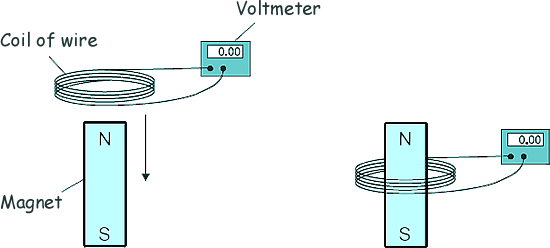GCSE Level Questions: Transformers Q8. The diagram shows the structure of a traditional transformer.
(a) There is an alternating current in the primary coil of the transformer. State what is produced in the iron core. [2 marks] (b) A transformer has only ten turns of wire on the secondary coil. If the potential difference across the secondary coil is 1.15 V and the potential difference across the primary coil is 230 V Calculate the number of turns on the primary coil. [3 marks] (c) In most transformers, the power output is less than the power input. State why. [1 mark] (d) Two students investigated how magnets can be used to produce a potential difference. The students held a coil of wire above a magnet. They quickly lowered the coil so that the magnet was inside the coil, as shown in the diagram.
The students recorded the maximum potential difference for coils with different numbers of turns of wire. The results are shown below.
(d)
[2 marks]
[1 mark]
[1 mark]
[1 mark] (e) A transformer has been developed that can be used with many different devices. Suggest one advantage of having a transformer that can be used with many different devices. [1 mark] (12 Marks Total) |
Follow me...
|
||||||||||||||||||||||







